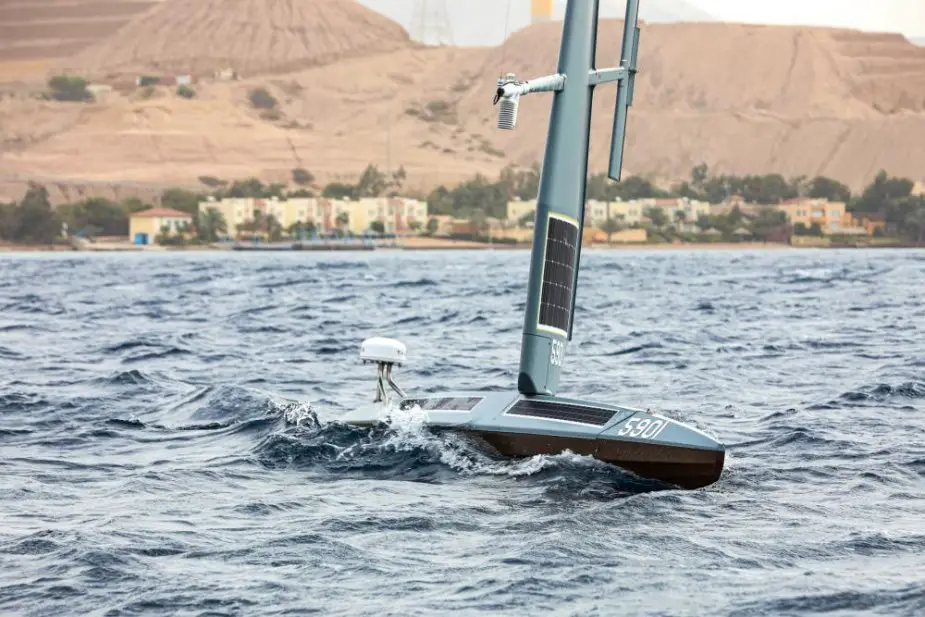Breaking news
US Navy successfully tests new Saildrone Explorer USV in the Gulf of Aqaba.
According to information published by the U.S. Navy on December 13, 2021, U.S. Naval Forces Central Command (NAVCENT) began operationally testing a new unmanned surface vessel (USV) in the Gulf of Aqaba as part of an initiative to integrate new unmanned systems and artificial intelligence into U.S. 5th Fleet operations.
Follow Navy Recognition on Google News at this link
 Saildrone Explorer USV in Gulf of Aqaba, Jordan (Picture source: U.S DoD)
Saildrone Explorer USV in Gulf of Aqaba, Jordan (Picture source: U.S DoD)
NAVCENT commenced exercise Digital Horizon while launching a Saildrone Explorer USV into the water for the first time from the Royal Jordanian naval base in Aqaba, Jordan.
Last month, U.S. and Jordanian naval leaders announced the base would become a joint hub for Saildrone operations in the Red Sea.
The Saildrone Explorer is a 23-foot-long, 16-foot-tall USV reliant on wind power for propulsion. The vessel houses a package of sensors powered through solar energy for building a shared picture of the surrounding seas.
Sailing at an average speed up to three knots, the Explorer carries a suite of scientific sensors for the collection of ocean data. The USV fleet has logged more than 10,000 days at sea in some of the most extreme weather conditions on the planet.
After establishing Task Force 59 in September, NAVCENT is in the early stages of integrating unmanned systems and artificial intelligence into the U.S. 5th Fleet operational environment.
In October, the task force integrated and evaluated new MANTAS T-12 USVs alongside crewed ships in the Arabian Gulf during exercise New Horizon. On Dec. 4, the task force initiated at-sea operational tests for a MANTAS T-38 USV off the coast of Bahrain.


























